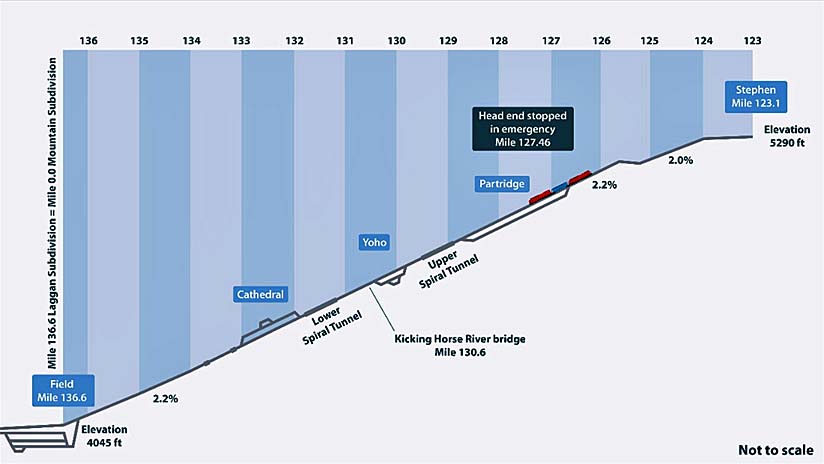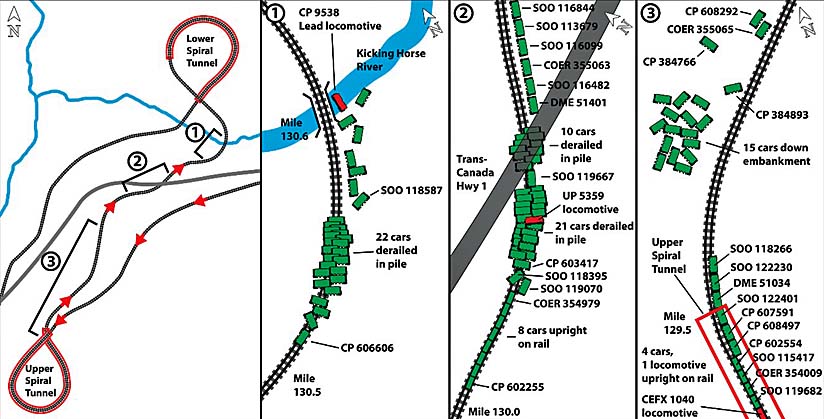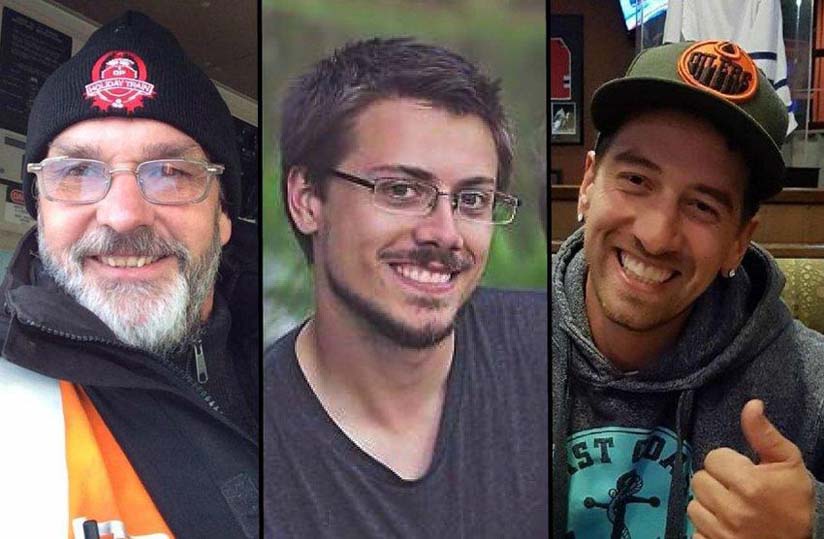
Gatineau Quebec - A fatal train derailment high in the Canadian Rockies has prompted calls for Transport Canada to push railways
to install new safety measures, including automatic parking brakes, and more brake testing standards for trains on hills.
"It is obvious that more must be done to reduce the risks to railway employees and the Canadian public and reduce preventable loss of
life," Transportation Safety Board Chair Kathy Fox said in a release of the board's long-awaited Investigation Report R19C0015
Thursday.
The independent federal agency spent three years probing the 2019 train derailment, which killed three people and sent 99 grain cars and two
locomotives careening off one of the most infamous stretches of track in the country.

The crash happened on a bitterly cold February night in Yoho National Park, a remote expanse of mountains and forest that, despite being just
over the Alberta-British Columbia border from Banff, has few services aside from the highway and one small town.
Conductor Dylan Paradis, trainee Daniel Waldenberger-Bulmer, and engineer Andrew Dockrell took over the train that had been left parked on a hill
when it began moving on its own shortly after midnight. All three were killed.
The TSB previously said the westbound train had been parked on a grade with its air brakes applied for two hours.
It gained speed down the hill, and with no hand brakes applied, the train derailed at a curve in the tracks at roughly 01:00.
Only 13 cars remained on the track, the rest tumbling as far as 60 metres down the mountain.
The head locomotive plunged into the Kicking Horse River, just east of the town of Field, B.C.
While the train had passed an airbrake test in Calgary, those tests don't measure how effective the brakes are.
The TSB report found that the main factors in the crash were the fact the train was left sitting for several hours on the steep grade in the cold,
resulting in air leaking out of the braking system.
The TSB is calling for Transport Canada to establish testing standards for the brakes of trains parked on steep grades in the cold, and to install
automatic parking brakes on freight cars.
Speaking to media, Fox also had harsh words for the Canadian Pacific Railway Company (CP), pointing out that it had had train crews submit safety
reports about descending the Field Hill in the cold for several years previously.
"Yet year after year, the reports were closed," she said.
In its third recommendation, the TSB is asking Transport Canada to require CP to demonstrate that it has a safety management system that can
appropriately identify hazards and measure risk.
The events of that night have long been controversial.
Following a preliminary review, RCMP began a criminal investigation in December 2020.
This is far from the first time that stretch of track has caused problems.
The settler history of the Kicking Horse Pass is one carved out by the railway.
Although rocky and steep, it was chosen as the route for the railway designed to finally knit the country together in the 1870s, the pass itself
would be designated a Canadian historic site a century later.
The steep grade on the eastern slopes posed a problem right from the beginning.
The first train to attempt the so-called Big Hill, in August 1884, derailed and ran off the tracks into the river, killing three.
The treacherous route through the mountains prompted the railway to build large circular stretches of track called the Spiral Tunnels, which allow
trains to burrow through the mountain on large loops, blunting the steepness of the descent.
These days, trains carrying varying loads such as grain, potash, and petroleum products still use the tunnels.
Now a tourist attraction, a roadside pullout with interpretative signs allows drivers to pull over and see the feats of engineering.
But some of the danger remains.
In 2019, the train came off the tracks in between the two tunnels.
It's still the steepest mainline rail corridor in the Canadian Rockies, Graeme Pole, a B.C.-based writer previously told the Star.
The route has remained a challenge in more recent times.
Pole said the area has plenty of hazards, especially in winter, as sections of the corridor are exposed to avalanches.
Alex Boyd.

 Links to Transportation Safety Board (TSB) Investigation Reports will no longer be provided as
their address (URL) is unreliable due to continuous revision making their linkrot overwhelming.
Links to Transportation Safety Board (TSB) Investigation Reports will no longer be provided as
their address (URL) is unreliable due to continuous revision making their linkrot overwhelming.
(there was no image with original article)
(usually because it's been seen before)
provisions in Section 29 of the Canadian
Copyright Modernization Act.
